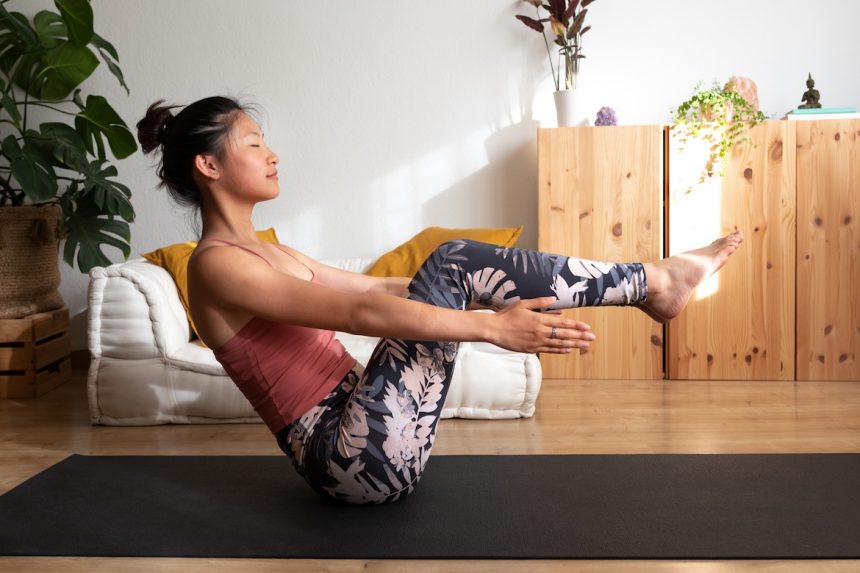When you imagine a boat, you might picture a canoe or kayak floating lazily on the water. However, when you practice boat pose (Paripurna Navasana in Sanskrit) in yoga class, there is nothing lazy about it. This intense posture is a killer way to engage multiple muscles in your core. According to Wendy Cope, a yoga instructor at Crunch Fitness, boat pose is a seated balance designed to strengthen the core. Despite its simple appearance, it is a challenging pose that requires focus and alignment.
To execute boat pose with perfect form, start by sitting on your glutes with your knees bent and feet flat on the floor. Place your hands behind your hamstrings, lean back with your shoulders down, and draw your belly button into your spine. Lift one foot off the ground, then the other, keeping your legs bent with shins parallel to the ground. Gradually extend your arms straight forward and, if comfortable, reach them overhead. You can eventually extend your legs long to form a V shape with your body.
Boat pose targets various muscles in your core, including your rectus abdominis, transverse abdominis, obliques, hip flexors, inner thighs, and lower back. The benefits of boat pose include boosting core strength, awakening hip flexors, building coordination, and providing a sense of accomplishment.
There are several variations of boat pose to make it accessible to different levels of practitioners. These include variations with forearms down and knees bent, forearms down and legs straight, knees bent in tabletop position, and one leg straight at a time. Practice these variations to challenge yourself and improve your balance and strength.
To avoid common form mistakes in boat pose, remember not to lean too far back on your tailbone, keep your shoulders down, avoid craning your neck, engage your core by drawing the navel towards the rib cage, and maintain proper alignment throughout the pose. By focusing on correct form and alignment, you can maximize the benefits of boat pose in your yoga practice.






